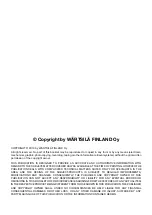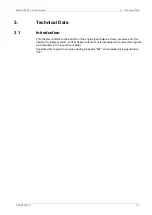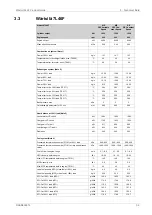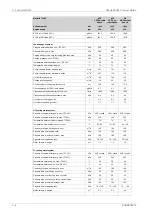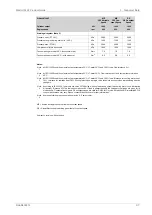
2.2
Loading capacity
Controlled load increase is essential for highly supercharged diesel engines, because the
turbocharger needs time to accelerate before it can deliver the required amount of air. A slower
loading ramp than the maximum capability of the engine permits a more even temperature
distribution in engine components during transients.
If the control system has only one load increase ramp, then the ramp for a preheated engine
should be used. The HT-water temperature in a preheated engine must be at least 70 ºC and
the lubricating oil temperature must be at least 40 ºC.
The loading ramp “normal” can be taken into use when the engine has been operating above
30% load for 6 minutes. All engines respond equally to a change in propulsion power (or total
load), also when a recently connected engine is still uploading to even load sharing with parallel
engines. A recently connected generator shall therefore not be taken into account as “available
power” until after 6 minutes, or alternatively the available power from this generator is ramped
up to 100% during 10 minutes. If the load sharing is based on speed drop, the power
management system ramps up the load on a recently connected generator according to the
ramp “preheated”.
The “emergency” loading ramp can be used in critical situations, e.g. to steer as fast as
possible.
The emergency ramp can be activated manually or according to some predefined condition,
and there shall be a visible alarm indicating that emergency loading is activated.
The load should always be applied gradually in normal operation. Class rules regarding load
acceptance capability of diesel generators should not be interpreted as guidelines on how to
apply load in normal operation. The class rules define what the engine must be capable of, if
an unexpected event causes a sudden load step.
Electric generators must be capable of 10% overload. The maximum engine output is 110%
in diesel mode.
2.2.1
Mechanical propulsion, controllable pitch propeller (CPP)
Fig 2-2
Maximum load increase rates for variable speed engines
If minimum smoke during load increase is a major priority, slower loading rate than in the
diagram can be necessary below 50% load.
2-2
DAAB605814
Wärtsilä 46F Product Guide
2. Operating Ranges
Summary of Contents for 46F Series
Page 1: ...Wärtsilä 46F PRODUCT GUIDE ...
Page 4: ...This page intentionally left blank ...
Page 8: ...This page intentionally left blank ...
Page 18: ...This page intentionally left blank ...
Page 86: ...This page intentionally left blank ...
Page 104: ...This page intentionally left blank ...
Page 154: ...This page intentionally left blank ...
Page 162: ...This page intentionally left blank ...
Page 170: ...This page intentionally left blank ...
Page 176: ...This page intentionally left blank ...
Page 194: ...This page intentionally left blank ...
Page 200: ...This page intentionally left blank ...
Page 202: ...This page intentionally left blank ...
Page 207: ...Fig 21 7 List of symbols DAAF406507 7 DAAB605814 21 5 21 ANNEX Wärtsilä 46F Product Guide ...


